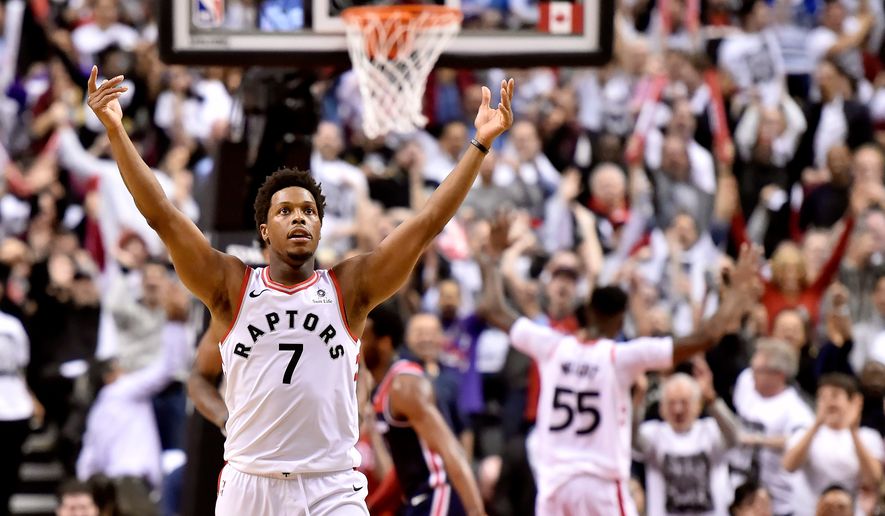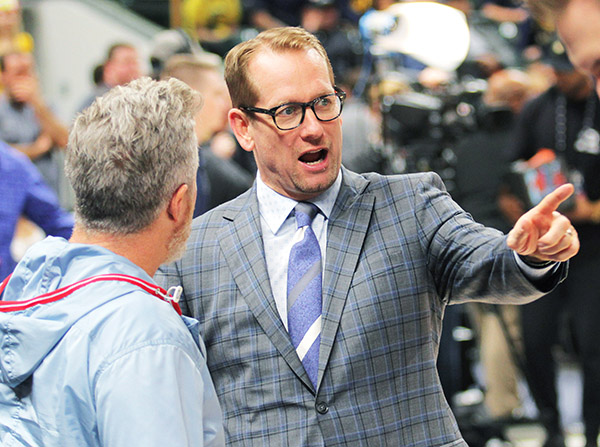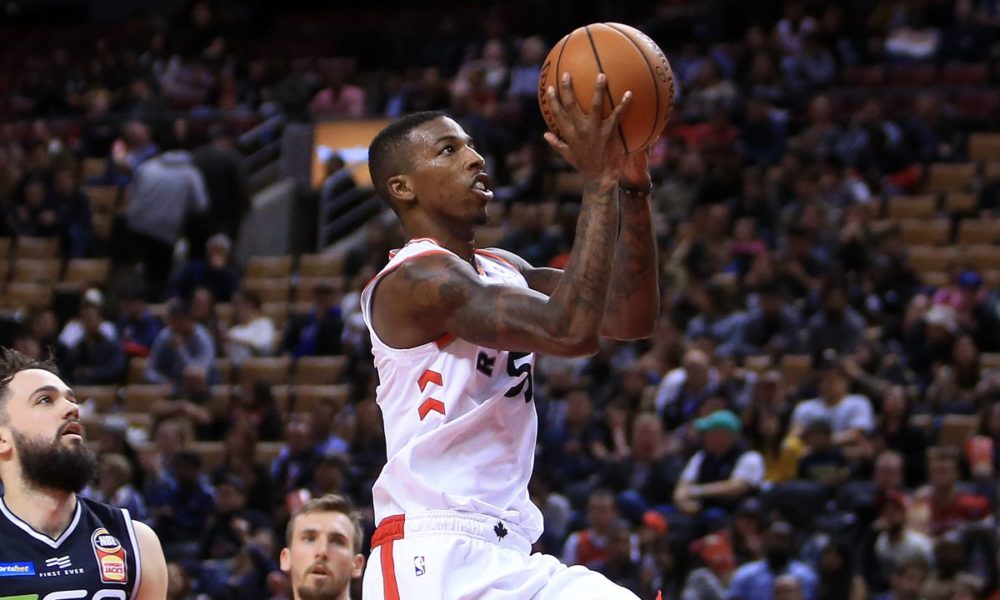The beginning of an NBA season is a lot like Gillian Flynn’s Gone Girl. So many facts pummel you in the face, overloading your senses, that you don’t quite know what is true and what isn’t. In Gone Girl, it’s life or death for Nick to figure out what is and isn’t real. An NBA season doesn’t boast the same stakes, but it does mimic the same plot format, with an impossible number of clues, few of which lead to actual realities. Let’s look at the Raptors and decide which clues thus far this season are real and which are false flags.
Pascal Siakam will continue to have the best defensive rating on the team
This is perhaps too believable. I am comfortable that Siakam will have the best defensive rating on the team for several reasons.
Nick Nurse’s rotations thus far have been rather more predictable than advertised. While a majority of Raptors Republic writers believed in the three-wing starting lineup, Nurse has remained committed to Siakam starting at the power forward position. This has had a few effects. Defensively, Siakam has played alongside Kawhi Leonard, Kyle Lowry, and Danny Green. That lineup should continue to have the best defensive rating on the team, with either Serge Ibaka or Jonas Valanciunas anchoring as the center, purely due to the size, speed, and turnover-creation of every player from 1-4.
While Siakam starts at power forward, he will have few minutes alongside CJ Miles (who for now boasts the team’s second-best defensive rating. That will certainly change.) That will keep his defensive rating mint.
Some other numbers are encouraging. Including every player on the Raptors, opponents shoot the highest percentage when Siakam is off the court. When he’s on the court, they shoot a cadaver-like 36.9 percent. That will surely not be the case over a full season, but it is evidence that defensive lineups that include Siakam will be dominant. That shouldn’t change.
Danny Green will continue to hit more than 40 percent of his triples
This is a tough one, as he hasn’t shot with such accuracy over the course of a season since 2012-13. It would make sense for Green’s accuracy to tail off somewhat, purely because of his mediocre shooting numbers in recent years. However, look at the actual numbers and it may not be the case.
Green is shooting the right shots. The vast majority of his attempts 3s have been catch-and-shoots, undefended, with zero dribbles, and fewer than two seconds of touching the ball. If Green continues to take such easy shots, he is certainly capable of making such a high rate. There’s even room for improvement, as only a quarter of Green’s triples have come from the corner.
One might consider Green’s accuracy to be a side-effect of his exclusive claim to chemistry with Kawhi Leonard. The two have played together for years, of course, which is why Nurse has made sure that 78 percent of Green’s minutes have come alongside Leonard. The narrative is that Leonard’s presence on the court has opened up jumpers for Green, and Leonard has actively been looking for Green. That’s not the case. Leonard has only passed to Green 16 times, which is fewer than Lowry or Fred Van Vleet. Leonard has only assisted three of Green’s 28 made triples, which means Green hasn’t been benefiting from some San Antonio connection that might decline later in the season.
Green may not hit 42.9 percent of his triples, because that elusive number would have ranked 13th in the NBA last year, ahead of Steph Curry, JJ Redick, or Kevin Durant. That’s a tall order. However, shooting over 40 percent seems feasible, particularly as Green is dramatically healthier than he was last year. I’ll say this is more signal than noise, and this will continue.
Kawhi Leonard will continue to lead the Raptors in post-ups and isolations
This has been a predictable trend. The Raptors want Leonard to get his legs under him, having only played in nine games last year. They want him to attempt a bunch of shots, get up and down the court, and basically play his way into shape. That’s been the case thus far this season as he’s led the Raptors in field goal attempts despite only playing in three of four games.
Because the Raptors run a relatively egalitarian, motion-friendly offence, it’s hard for Leonard to shoot 20+ shots a game inside the confines of Nurse’s offence. He’s given freedom to improvise to an extent that isn’t provided to other Raptors. This makes sense, but it has also made for bad offence.
Through three games, Leonard has attempted 17 isolation and 11 post-up possessions, scoring a meager 19 points total (13 from isolation and 6 from post-ups). He has yielded 0.68 points per possession in those situations, which pales in comparison to his 1.76 points per possession in every other situation. Basically, when he improvises, Leonard is a flushing toilet, while when he stays within the offence, he’s a solar flare.
To reiterate, the Raptors want him to get reps scoring outside of the offence. They will need it in the playoffs, and it is a great way to get Leonard up to speed. He will score more efficiently in those scenarios. As those attempts should decline as the season continues, other players will likely surpass Leonard on the block. Last year, Valanciunas used more possessions in the post than DeMar DeRozan, and Serge Ibaka already has as many post-ups as Leonard, with Valanciunas trailing quite close. (Furthermore, both are far more efficient than Leonard thus far, with Valanciunas even scoring an incredible 1.29 points per possession in post-ups).
When Leonard’s efficiency numbers begin to stabilize in the post and in isolations, his number of attempts will decline; that’s when you know he’s up to speed. By the end of the season, Leonard should lead the Raptors in isolations, while he’ll likely finish second or third in post-ups.
Kyle Lowry will continue to average a double-double
Through four games, Kyle Lowry is averaging 10 assists a game. He’s led the team in pick-and-roll attempts, while his assists have been distributed evenly across the team.
Lowry’s assists have come in a variety of ways. He’s picked up several due simply to being the point guard. If he dishes to a player coming off of a pin-down, who then creates a shot on the drive, Lowry will pick up an assists despite doing no work. Lowry has also been terrific at creating attempts for others, which has benefited Ibaka in particular. Lowry has been great at running the break and finding shooters in transition.
Furthermore, Lowry is actually averaging fewer passes per game, 53.3, than he did last year – 57.5. (His potential assists, however, have increased from 12.2 to 15.0). He’s averaging fewer touches this year than last, but his average time per touch, and number of dribbles per touch, have increased this year. That’s a fancy way of saying Lowry is a true point guard this year, while last year DeRozan was the de facto point guard on a huge number of plays. Lowry may be touching the ball less this year, but he has more control over the offence, and he has contributed more to possession-ending plays, whether a shot, pass before a shot, or a turnover.
There will be reasons why Lowry should average fewer assists as the season ages. Leonard has only run six pick-and-rolls, which is fewer than even Norman Powell on the season. As Leonard shifts his attempts into the flow of the offence, expect him to leach pick-and-roll attempts from Lowry, which should diminish Lowry’s assist opportunities. Further evidence that Lowry’s numbers will fall back to the mean? Thus far, he leads the league in assist percentage, at 38.8. That would have been eighth in the league last year, which is doable, but an unlikely standard for an entire season.
So Lowry’s assists will certainly be higher than last year. He has averaged between 6.4 and 7.4 assists per game every year in Toronto, but that will no longer be the case this year. He will have more passing opportunities as well as better shooters at his disposal. While 10 assists per is unlikely to be within the realm of possibility this year for Lowry, I would expect him to shoot just below double-digits, likely averaging 8-9 assists per instead. It would still be a career high.
Serge Ibaka will continue to average more minutes than Jonas Valanciunas
Even if it was clear in preseason that Ibaka would make a passable center, he has surpassed expectations. His defence has been better than advertised, and his contributions to team offence have improved in subtle ways. He is averaging more screen assists and more shots contested than he did last year in the same number of minutes. It’s quite possible that this is due exclusively to playing center, but Ibaka is actually averaging significantly more screen assists than even Valanciunas did last year.
In fact, Ibaka’s 3.8 screen assists per game would have ranked 13th in the league last year, ahead of monsters like Jusuf Nurkic, Joel Embiid, and Clint Capela. 3.8 per game would be the most any Raptor has ever averaged since the statistic has been tracked.
Ibaka is making contact on screens, which is a huge boon for Toronto. Scorers like Lowry need airspace when their bigs set a screen, and Toronto’s offence will not be optimized unless their centers set solid screens. Thus far, Ibaka has done so; his offensive rating may not be as high as Valanciunas’, but he’s kept it close, which is all Toronto can ask of its new defensive specialist at the center position. He may not be hitting 3s, but he’s done enough on offence to help the team score.
Ibaka has proven that he can do important jobs centers need to do. When he’s defending the rim this season, opponents are shooting 8.7 percent below their expected percentages. That’s a better mark than Valanciunas has ever set. His block and steal rates are both above average for a center. Even if his individual rebounding has been mediocre, lineups with Ibaka are better at defensive rebounding than lineups with Valanciunas.
As long as Ibaka plays good defence (he has), he will play lots of minutes. While Ibaka and Valanciunas have split starts – Ibaka starting against Al Horford and Cody Zeller, with Valanciunas starting against Tristan Thompson and Ian Mahinmi – Ibaka has played dramatically more minutes per game (28.2) than Valanciunas (18.4). Though I didn’t believe it would be the case before the season started, Ibaka will likely lead the team in center minutes played over the season.




